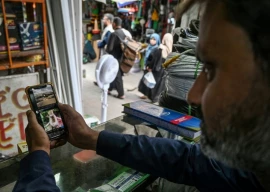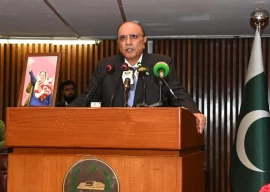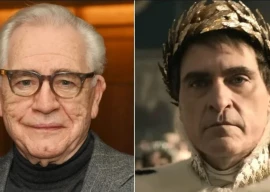
LAHORE: Several lives could have been saved following Wednesday’s suicide blasts in Lahore had sufficient emergency aid been administered at one of Lahore’s largest hospitals, The Express Tribune has learnt.
According to blast survivors and officials at the Mayo Hospital, four injured persons died because automatic ventilators were not available and three succumbed because of a lack of suction pumps. Two more died of suffocation in the emergency ward and many others died because senior doctors, particularly neurosurgeons, were absent.
Attendants of those injured told The Express Tribune that the hospital’s medical superintendents (MS) were 45 minutes late and reached the hospital at 7:40 pm. Instead of issuing directions or encouraging young doctors, they preferred to sit in a separate room, they said.
Hospital sources said that 150 injured people were brought to the emergency ward following the blast at Karbala Gamay Shah.
“Twenty-eight injured died, 65 are being treated and others have been discharged,” said additional medical superintendent Abdul Majeed. “Two injured are in a critical state.”
Riaz Hussain lost his brother-in-law Waseem who had been critically injured but he had a chance if a ventilator had been provided in time. “A young doctor told me that he can be saved but there were no automatic or manual ventilators in the emergency ward,” Hussain said. “I was crying in the ward’s ICU and calling out to doctors and nurses. One of the doctors did not have a drip to administer to [Waseem] because the hospital’s pharmacists weren’t present.”
Mayo Hospital’s emergency ward was manned by six junior doctors when blast victims were brought in. It has one hundred beds and also caters to patients with skin diseases.
“An unidentified 17-year-old injured also died because he couldn’t get a ventilator,” said Khadim Hussain, who sat with his injured wife and a baby.
Hussain said that nurses were asking each other for ventilators but could not get enough to save critical patients. “At 8 pm, nurses had only four manual ventilators, which were insufficient to tackle the number of injured people in need. The nurses were not even trained to operate the manual ventilators,” he said.
Zainab Bibi lost her son because he wasn’t provided a suction pump in time. “Ball bearing from the bombs penetrated into his chest and intestines.
There was only one suction pump in the ICU, which was already in use. When the doctor brought it for my son, he had already passed away,” she said.
Survivor Zaigham Ali believed that nurses got flustered when they saw such a large number of patients and could not perform.
“I couldn’t understand their attitude: were they just untrained or deliberately avoiding blood spots on their crisp white dresses,” he said.
Another survivor Sajjad Hussain said that an injured man and a woman died of suffocation in the hospital’s emergency ward. “The six fans in the ward were off and I repeatedly asked doctors and nurses to switch them on.
But they all said that fans were out of order. Only 10 stands were available and attendants of the injured had to carry bottles in their hands,” he said.
Young doctors with little experience said that they had needed guidance to handle the situation but could not get in touch with senior doctors.
Dr Fakhir, a young doctor from Mayo Hospital, confronted King Edward Medical University’s Vice Chancellor Dr Zafrullah Khan and told him that young doctors needed help from senior doctors, particularly neurosurgeons, at times like these.
But Dr Khan said that if the senior doctors’ cell phones were off, younger doctors should have dealt with the injured using their own approach.
When contacted, Punjab health secretary Fawad Hassan Fawad said that no country could treat blast victims properly.
However, MS Dr Zahid Pervaiz claimed that the hospital’s emergency services were excellent and rubbished reports that he wasn’t present when needed.
“I was in [the] emergency [ward] since the first ambulance reached,” he said, blaming media reporters for crowding the ward and causing suffocation.
But a woman doctor, on condition of anonymity, said that Dr Pervaiz had hardly visited the emergency ward or any department of the hospital.
“He cannot understand the problems of the emergency ward because he usually relies on reports which are prepared in an air-conditioned room,” she said.
Published in The Express Tribune, September 3rd, 2010.
























































COMMENTS
Comments are moderated and generally will be posted if they are on-topic and not abusive.
For more information, please see our Comments FAQ